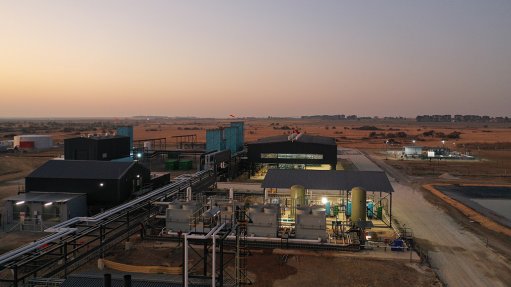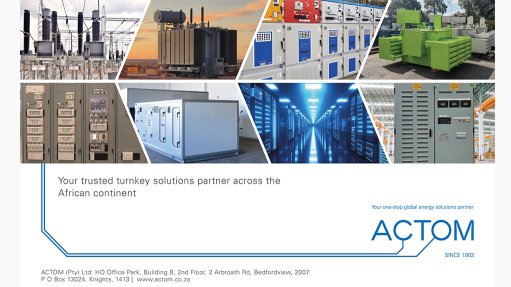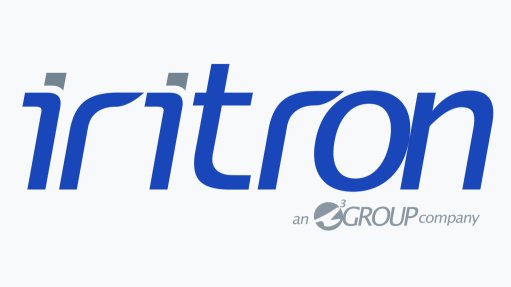Imports, lack of legislative support curtail sector
The South African mining sector is a challenging sector for valves suppliers to operate in, as the valves used in the sector have become highly price-orientated.
Industry body South African Valve and Actuator Manufacturers Association (Savama) executive committee member Julius Frauendorf says this focus on low prices – owing to challenges in the local market – often takes preference over buying locally manufactured valves and valve- related products.
Currently, the local valve and valve accessory manufacturing industry is worth about R1.5-billion, which accounts for only about 20% of the entire South African valves market, which is dominated by imported valve products, which account for the other 80%.
This is a result of the 2017 Preferential Procurement Regulations being declared unconstitutional by the Constitutional Court last year, which, in turn, hampered most of the gains made by local manufacturing over the past five to seven years, he argues.
The Mining Charter III also had procurement targets that were set aside by the Johannesburg court.
Frauendorf, however, adds that the Mining Charter III had limited impact for valves, which require far less investment, compared with the large capital equipment required in mining operations.
“The mines did agree to support local valve and valve accessories where possible and within reason. The main focus is production days, cost and delivery periods which will influence purchasing decisions to ensure uninterrupted operability at optimal production input cost.”
Further, while the 2017 regulations’ stipulations were a key factor, the valve industry’s gains were also a result of work done by the Department of Trade, Industry and Competition (DTIC) and by members of industry organisation the Valve and Actuator Manufacturers Cluster of South Africa, Frauendorf adds.
He stresses that challenges in the mining sector affect valve and valve accessory manufacturers directly – mines, with reduced output, have to save costs to manage increased costs arising from their implementing costly workarounds to negate a lack of adequate electricity, and rail and port infrastructure.
Possible mitigation for the valves sector’s challenges could have been government’s revised 2022 Preferential Procurement Regulations that came into effect in January this year to secure the future of local manufacturers.
The new Preferential Procurement Regulations, however, stipulate no local production or content, nor does it form part of the supply chain management policy or preferential procurement policy of municipalities, he adds.
He also states that the 2022 Regulations no longer provide for the use of pre-qualification criteria.
Further, he emphasises the importance of continuously engaging with government agencies and departments by Savama and Engineering Industries Federation of South Africa (Seifsa), such as the DTIC, which is responsible for local designation policies and the roll-out of these policies for various sectors.
“Savama – through our partner Seifsa – continues to make its voice heard to the DTIC and other government departments in the hope that we are heard, and so that meaningful engagements can lead to actions that will improve the situation for all parties involved.”
Industry Expansion
Frauendorf says less money is being invested in research and development in the local valves sector, owing to the decline in support for local manufacturers.
This is in addition to loadshedding, failing government policies and a lack of infrastructure development that have forced most local manufacturers “into survival mode”.
The lacklustre local environment has encouraged local manufacturers to focus on supplying their products and services to other African countries.
Further, Frauendorf comments that mines are directing more of their capital toward, and focusing their business strategies on, other African countries, partly because exploration is an arduous and long process, and many South African mines are nearing the end of their lives, which “paints a grim picture for any significant growth in South African mining in the longer term”.
The more mining houses look to invest outside South Africa, the worse the impact will be on local manufacturers, he observes.
Frauendorf, therefore, stresses the need to expand the local exploration sector and develop new mines, especially as only about 40% of South Africa’s mineral resource wealth has been unlocked to date.
Moreover, increasing activity across the value chain by beneficiating and upgrading minerals and raw materials, rather than merely exporting raw goods to other countries, could also help boost the local industry.
“Exploration and mine development will allow for sustainable growth for the mining sector in South Africa and across all the subsectors, such as the valve and accessory manufacturers, that support the mines. Some products were developed specifically for local mining,as the country has some of the deepest mines in the world.”
Skills Development
Savama provides training courses that introduce learners to different valves, as they are suited to certain media and industry segments.
The association’s courses are available to any person who wants to add to his/her understanding of different types of valves and valve-related skills.
Savama members are always available to assist and offer knowledge to upskill others that are either indirectly or directly part of the valves industry.
“Member companies also offer in-house training, which is more focused on the specific products offered by the manufacturer. Other facilities also exist with our member companies that offer courses registered and sanctioned by industry body Consulting Engineers South Africa, with two continuous professional development points per course completed for professional registered engineers.”
He adds that Savama – with other Seifsa-affiliated associations that are also affected – will continue to engage and work with the DTIC, industry body the South African Bureau of Standards and other government departments to “make enough ripples until the tide changes, and the seriousness of the current situation is clearly understood and acted upon”.
“If the tide does not turn in the near future, then South Africa will lose various manufacturing sectors, skills and expertise over the next two to three years. Less money in State coffers and more unemployment will be the end result of government’s lack of transparency and ability to implement action plans timeously,” Frauendorf concludes.
Article Enquiry
Email Article
Save Article
Feedback
To advertise email advertising@creamermedia.co.za or click here
Comments
Announcements
What's On
Subscribe to improve your user experience...
Option 1 (equivalent of R125 a month):
Receive a weekly copy of Creamer Media's Engineering News & Mining Weekly magazine
(print copy for those in South Africa and e-magazine for those outside of South Africa)
Receive daily email newsletters
Access to full search results
Access archive of magazine back copies
Access to Projects in Progress
Access to ONE Research Report of your choice in PDF format
Option 2 (equivalent of R375 a month):
All benefits from Option 1
PLUS
Access to Creamer Media's Research Channel Africa for ALL Research Reports, in PDF format, on various industrial and mining sectors
including Electricity; Water; Energy Transition; Hydrogen; Roads, Rail and Ports; Coal; Gold; Platinum; Battery Metals; etc.
Already a subscriber?
Forgotten your password?
Receive weekly copy of Creamer Media's Engineering News & Mining Weekly magazine (print copy for those in South Africa and e-magazine for those outside of South Africa)
➕
Recieve daily email newsletters
➕
Access to full search results
➕
Access archive of magazine back copies
➕
Access to Projects in Progress
➕
Access to ONE Research Report of your choice in PDF format
RESEARCH CHANNEL AFRICA
R4500 (equivalent of R375 a month)
SUBSCRIBEAll benefits from Option 1
➕
Access to Creamer Media's Research Channel Africa for ALL Research Reports on various industrial and mining sectors, in PDF format, including on:
Electricity
➕
Water
➕
Energy Transition
➕
Hydrogen
➕
Roads, Rail and Ports
➕
Coal
➕
Gold
➕
Platinum
➕
Battery Metals
➕
etc.
Receive all benefits from Option 1 or Option 2 delivered to numerous people at your company
➕
Multiple User names and Passwords for simultaneous log-ins
➕
Intranet integration access to all in your organisation
















